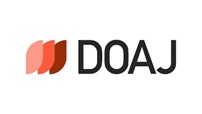Abstract
This paper was motivated by two gaps in the extant literature on brand portfolio planning. First, research has shown that, as the number of products connected to a brand increases, the extended product receives more favorable evaluations. However, this result was obtained by comparing two brands with different number of products while controlling the brands` breadths. Hence one may question if the above result would hold when the brand is narrow as well as broad. Second, the literature has investigated the effect of brand breadth on the perceived fit and evaluations of an extended product within a relatively limited range (“narrow vs. broad”) and not considered the case of a “very broad” brand. To address these gaps, we propose two hypotheses: 1) the effects of the number of products associated with a brand on the perceived fit and evaluations of a moderately far brand extension are moderated by the brand`s breadth (H1); and 2) the relationship between a brand`s breadth and a moderately far extension`s perceived fit and evaluations looks like an inverse-U shape (H2). Study 1 was conducted to test H1. Study 1 employed a 2 x 2 within-subjects design in which the first factor was the number of products (small (2) or large (5)), and the second factor was brand breadth (narrow or broad). We measured brand breadth as the perceived similarity among products associated with a brand. Participants provided the perceived fit and evaluations of an extended product. Study 2 was conducted to test H2 as well as to replicate Study 1 in a more general setting and with different products. It employed a 2 x 3 within-subjects design, in which the first factor was the number of products (small (2) or large (5)), and the second factor was brand breadth (narrow, broad, or very broad). The results from two experiments support both hypotheses. This paper contributes to the literature on brand extensions in two ways. First, it broadens our understanding of the effects of product number and brand breadth on extended product evaluations by considering the two factors jointly. Second, we believe this study to be the first to present evidence that brand breadth can exert an inverted U-shape effect on the perceived fit and evaluations of an extended product. The results also offer implications for marketers. First, marketers should heed the finding that adding similar products to a narrow brand does not help the brand`s extension launch. Second, the finding that the relationship between brand breadth and extended product evaluations might not be linear provides practical implications. While a narrow brand should not keep launching close extensions, nor should a broad brand continue producing far extensions to broaden its breadth. A firm with a broad corporate or family brand might want to consider introducing a new brand instead of adding dissimilar products under the brand umbrella.
Recommended Citation
Yeu, Min Sun; Yuk, Hye Yeon; Kim, Bo Ha; Yoo; Cho, Seong Wan; Yeo, Jun Sang; and Park, Chan Su
(2013)
"Effects of Product Number and Brand Breadth on the Evaluations of an Extended Product,"
Asia Marketing Journal: Vol. 15
:
Iss.
3
, Article 6.
Available at: https://doi.org/10.53728/2765-6500.1560
Creative Commons License

This work is licensed under a Creative Commons Attribution 4.0 License.





